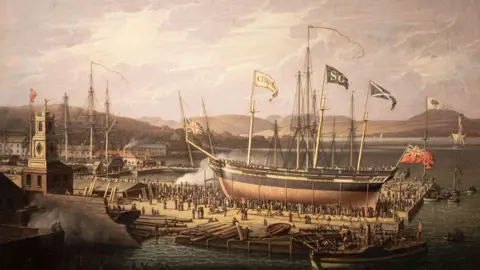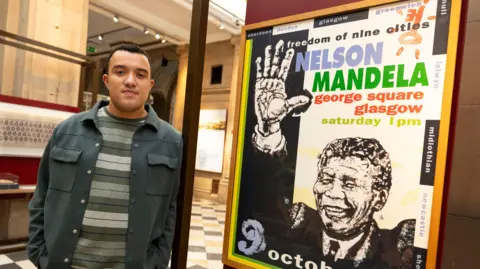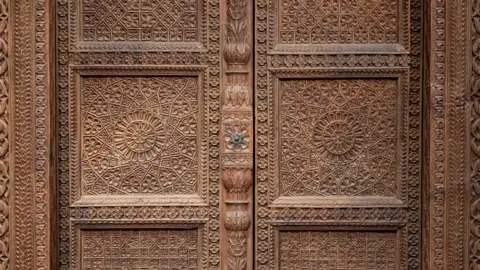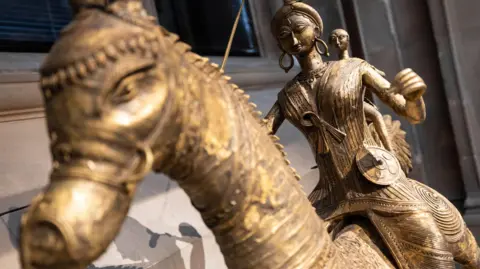Glasgow's slave trade past: New exhibition opens
 Glasgow Life
Glasgow LifeA new exhibition has opened at Glasgow's Kelvingrove Museum exploring the city's ties to the slave trade and colonialism.
Glasgow merchants profited from connections to the Atlantic slavery economy in the 18th and 19th Century, as well as from British Empire colonies such as Jamaica and India.
The museum's curators said they wanted to highlight the links to those periods that still exist today.
The exhibition called "Glasgow: City of Empire" comes after previous calls for a dedicated slavery museum in Scotland.
Located on the south balcony of the museum, the exhibition is permanent and free to access.
It also has a section on how slavery links to racism in modern Scotland.
Glasgow was once known as “the second city of the Empire” and was a major trade route for sugar and tobacco for the slave states of America and the West Indies.
Nelson Cummins, the exhibition's curator, said that not everyone had the opportunity to learn about the realities of slavery while in school.
"The exhibit is an opportunity to change that," he said.
 Glasgow Life
Glasgow LifeThe exhibition also features many historical objects with ties to the British Empire.
These include an intricate wooden door made for the Indian Pavilion of the Glasgow International Exhibition in 1888.
The display explains that British colonialism led to the erasure of indigenous artists, as a result the expert Indian craftsmen who made the door are unknown and unacknowledged.
 Glasgow Life
Glasgow LifeThe exhibition also features a bronze statue called 'Rani of Jhansi' made in 2013.
Lakshmibai Newalkar was the warrior queen of Jhansi, an historic Indian city, and is considered one of the greatest freedom fighters in history, according to curators.
Scotsman Sir Colin Campbell led the British army against Lakshmibai's resistance forces in the Indian Rebellion of 1857 - his statue stands today in Glasgow's main civic square.
Mr Cummins said it was important for him to highlight the role of women in resisting colonial oppression, as historically women have been overlooked in acts of resistance.
 Glasgow Life
Glasgow LifeThe museum exhibit also features a section acknowledging its own role in the slave trade, as more than 300 natural history specimens were donated in 1905 by Robert Kirke, one of the last slave owners in Scotland.
Duncan Dornan, head of museums and collections at Glasgow Life, said they had already started to revisit all displays to add more background to where certain objects had come from if needed.
"This exhibit is a stepping off point," he said.

